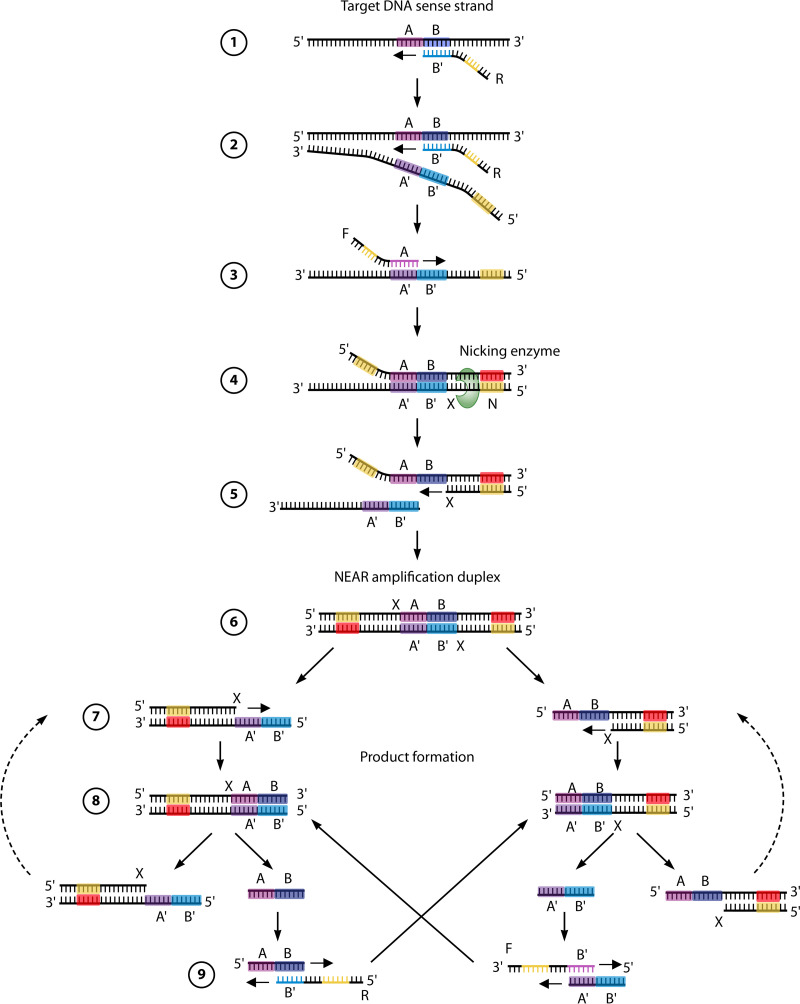FIG 6.
Principle of NEAR technology. The NEAR amplification reactions occur at 60°C and can be broken down into two milestones: NEAR amplification duplex formation and product formation. (1) The target recognition region (B′) of the reverse primer (R) binds to the complementary sequence (B) of the target DNA sense strand and is fully extended by the strand displacement DNA polymerase. (2) A second R primer binds to the template DNA and, during extension, displaces the elongated product of the first R primer extension. (3) The recognition region (A) of the forward primer (F) binds to its complementary sequence (A′) in the R extension product, and F is extended to create a double-stranded nicking enzyme recognition site (N). (4) The nicking enzyme recognizes N and cleaves a single strand of DNA in a sequence-specific manner at the cut site (X). (5) This releases a fragment of the R extension product. The remaining fragment serves as a primer and is extended at its 3′ end. (6) This extension completes the double-stranded complex, termed the NEAR amplification duplex, which is the starting point for product formation. (7) Nicking enzymes bind to the nicking enzyme recognition sites on both ends of the NEAR amplification duplex and cleave at X. (8) The resulting single-strand nicks create two complexes, each consisting of a single-stranded target region flanked by a nicking enzyme recognition region. (9) Repeated nicking, polymerization, and strand displacement activities result in the amplification of the AB and A′B′ target products. Cleaved complexes are regenerated, while the AB and A′B′ products can anneal to R and F primers, respectively. In turn, the bidirectional extension of the primer and product each creates duplexes that lead to the generation of the opposite product upon cleavage. Product amplification continues until reagents or enzymes are depleted.

